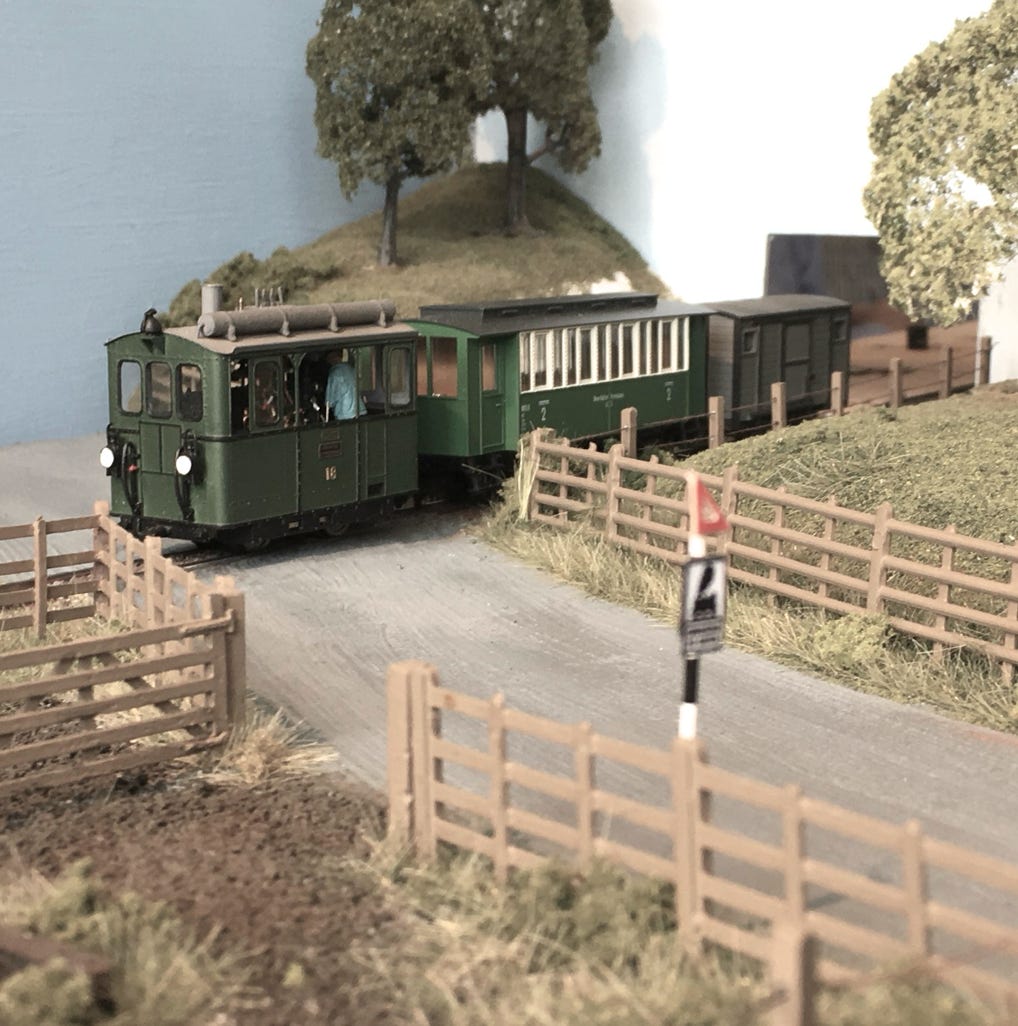

UK based
Prices for UK customers are shown inc 20% VAT
Other countries, inc EU, prices shown are ex VAT.
Digital


UK based
Prices for UK customers are shown inc 20% VAT
Other countries, inc EU, prices shown are ex VAT.
Digital

I get asked once in a while “The Tramfabriek motor runs on 12V. But I have a DCC controller with has an 18V output
What happens if I use the controller 18 V, but the motor needs only 12 V ?”
You have to understand though the controller may be 18V AC, the track voltage will be about 15-16V AC. And that doesn’t even matter, as it is the decoder that receives the power and will then feed the necessary power to the motor. All model train motors are 12V DC, so any DCC model train would have a problem if the AC power on the track was directly fed to the motor. It is the output of the DCC decoder that matters, not the track power. And that normally will be around 12V.
Even so, I’ve once tested one of my motors on 17V and it ran for 9.5 hours, only then to fail. So you are covered on all fronts.
Read all about Function mapping here.

Lenz settings for Tramfabriek coreless motors:
CV 50 (motor configuration): 4
CV 113 (Minimum PWM value): 5
(With the kind cooperation of A & H models)


Doehler & Haass settings for Tramfabriek coreless motors:
CV9=0 Motor frequency
CV50=0 Control variant, sets control to CV56-59
CV56=5 Motor control proportional
CV57=2 Motor control integral
CV58=0 Motor control measurement period
CV59=1 Motor control impulse width
Try CV59 between 1 and 4, see what works best for you. Value 2 gives a better drive, but also more noise. Value 3 is a good compromise.

Zimo settings for Tramfabriek coreless motors:
Tested with the Zimo sound decoder MS500:
CV 9 (motorfrequentie): 95
CV 56 (BEMF config/control): 35
CV 58 (BEMF intensity): 148
CV 57 (Voltage reference): 110 (=max voltage to motor at full speed is 11V)
Tested with an MX (sound) decoder:
CV 9 (motorfrequentie): 94
CV 56 (BEMF config/control): 148
CV 58 (BEMF intensity): 220
CV 57 (Voltage reference): 110 (=max voltage to motor at full speed is 11V)
Zimo brake function (Optional, but cool feature! Push button to brake):
CV 4 (braking delay): 110
CV 309 (brake function key): 0-29 (number of function key)
CV 349 (brake time): 6
Updated 18 AUG 2022
Train-O-Matic settings for Tramfabriek coreless motors:
CV61=10 (PID; Proportional constant)
(With the kind cooperation of Train-O-Matic)


Kühn settings for Tramfabriek coreless motors:
The default settings are already pretty spot on, but there can be some noise caused by the BEMF. The following settings should reduce this.
CV2 = 1 (Default 3) for slower driving at step 1
CV54 = Reduce to 4 to 8 (Default 16). Try what works best for your model, as it is depending on its gearing.
(With the kind cooperation of Kühn Modell & digital)
So far, I haven’t been able to get ESU decoders run as smooth as all the other mentioned on this page, mainly at the lowest speed steps. I would advise to choose one of the other brands on this page.
ESU settings for Tramfabriek coreless motors:
CV 02 = 2 (Start voltage)
CV 51 = 6 (‘K Slow” Cutoff)
CV 52 = 0 (BEMF Param. ‘K Slow’)
CV 53 = 120 (Control Reference voltage)
CV 54 = 10 (Load control Parameter ‘K’)
CV 55 = 6 (Load control Parameter ‘I’)
CV 56 = 255 (BEMF Influence at VMin)
CV 116 = 25 (Slow speed BEMF Sampling period)
CV 117 = 50 (Full speed BEMF Sampling period)
CV 118 = 5 (Slow speed BEMF Measurement gap length VMin)
CV 119 = 5 (Full speed BEMF Measurement gap length Vmax)
(With the kind cooperation of ESU)
Updated 7 SEP 2022
•